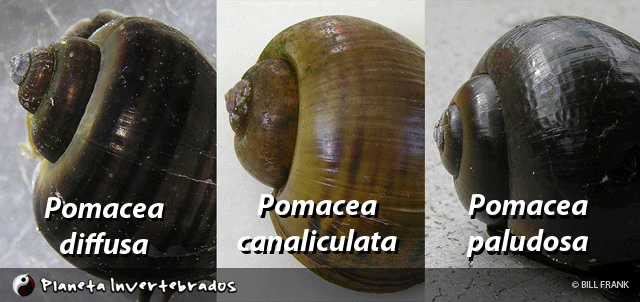Our Study Organism
A two-minute refresher on genetics.
Methods, Phase (1)
Methods, Phase (2)
How I'd do it, but my wife won't let me.
An open letter to the breeders and distributors.
Download this entire website as a [PDF] document.
It is important to be clear, from the very beginning, that we will be working exclusively with Pomacea diffusa, the snail almost-universally marketed as a “mystery snail” by aquarium shops and big-box pet stores like PetCo and PetSmart. Prior to about ten years ago they were often identified as “Pomacea bridgesii” until the systematic confusion in their native South America was sorted out by our good friend Ken Hayes and his colleagues. An alternate common name for the mystery snail is the “spike-topped apple snail.”
Mystery snails reach adulthood at around 2 cm standard shell length, and very rarely reach much more than 4 cm. They will not eat your aquarium plants. They can be purchased in a variety of color forms, for about $3.00 each, last time I checked. They are active and interesting pets, easily reared in your home aquarium.

Several larger species of Pomacea are also occasionally available on the market, called “channeled apple snails,” or “Peruvian apple snails” or “giant golden mystery snails” or something similar. These include Pomacea maculata, which has been introduced into ponds and drainage ditches the southeastern United States, Pomacea canaliculata, which has become a terrible pest in Asian rice cultivation, and the native Floridian Pomacea paludosa. These larger species are more challenging to keep as pets, and will eat your aquarium plants, and anything else too slow to get out of their way, including small children. They are not supposed to be sold commercially, and we are not working on their genetics.
The best way to recognize P. diffusa is by its spire angle, as shown on Bill Frank's photomontage above. If you're still worried that your pet might not be a bona fide mystery snail, Pomacea diffusa, visit Stijn Ghesquiere's applesnail.net website. Stijn has lots of good info on all the various species of ampullariid snails worldwide, not just P. diffusa but every other type of Pomacea you might run across, and ways to tell them apart.
Up next... Reproductive Biology!